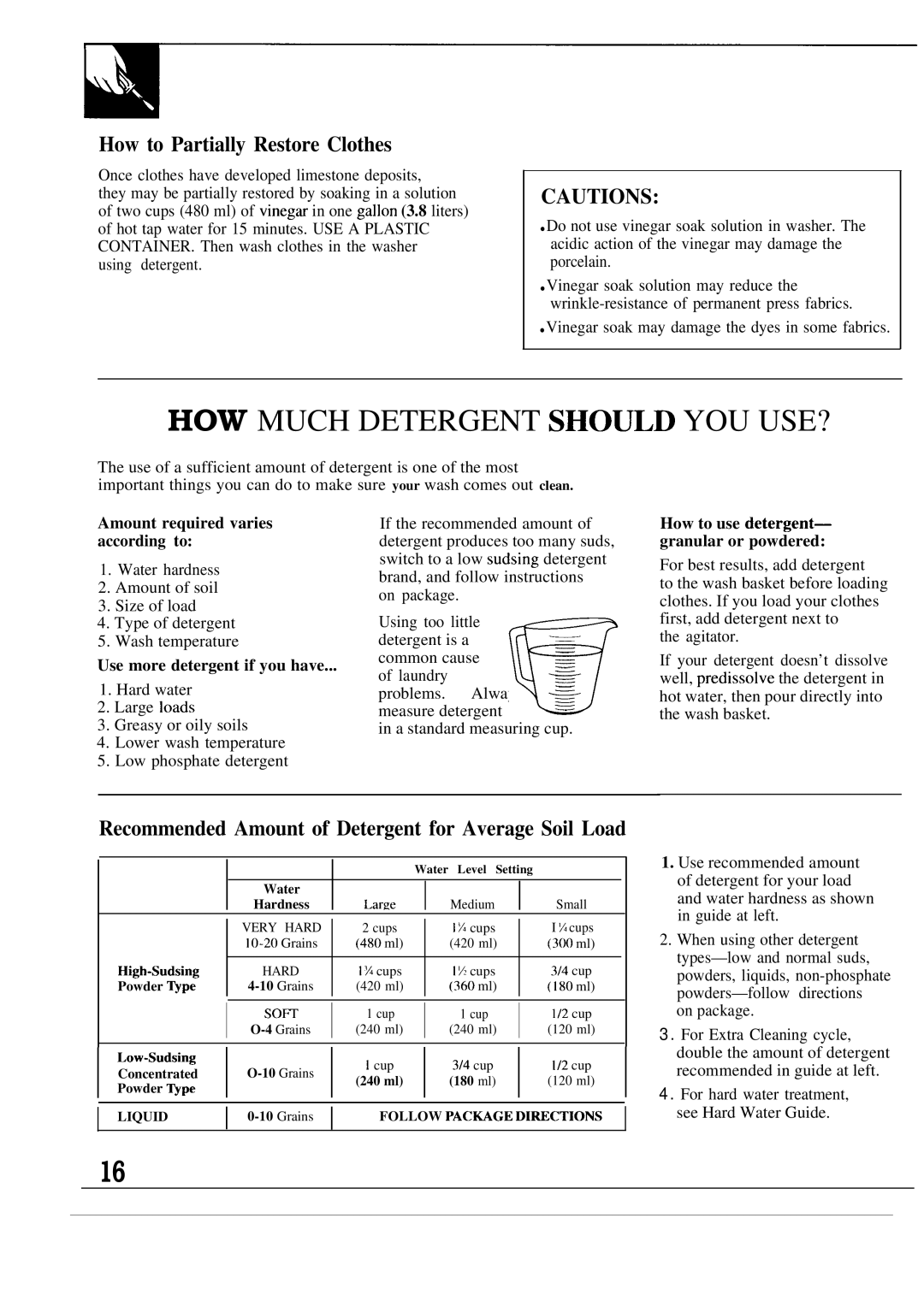WA8616R, WA8600R specifications
The GE WA8600R and WA8616R are advanced washing machine models that exemplify GE's commitment to innovation in home appliances. These units are designed to deliver robust performance and efficiency while ensuring clothes are cleaned thoroughly with care.One of the standout features of the GE WA8600R and WA8616R is their large capacity, making them ideal for families or those with substantial laundry needs. With the ability to handle a significant load, users can save time and energy, minimizing the number of cycles needed for larger laundry days.
Both models are equipped with a variety of wash cycles, ranging from standard options for everyday items to specialized cycles that cater to delicate fabrics, heavy-duty garments, and more. This versatility ensures that users can select the most appropriate settings for their specific laundry requirements, helping to preserve the quality of their clothing over time.
The technology behind these washing machines incorporates Energy Star certification, symbolizing their efficiency in water and electricity consumption. This feature not only benefits the environment by reducing energy waste but also translates into lower utility bills for homeowners.
Additionally, GE's SmartDispense technology is an innovative feature found in these models. It automatically dispenses the optimal amount of detergent based on load size and soil level, ensuring optimal cleaning results every time while eliminating the guesswork for users.
The hydro rinse and Deep Fill options further contribute to the machines' effectiveness. Hydro rinse ensures that all detergent is rinsed away, while the Deep Fill option allows users to add extra water to their cycle when needed, catering to water-intensive cleaning requirements.
Furthermore, both models emphasize user convenience with their intuitive controls and easy-to-read displays. This user-friendly interface allows for quick selection of wash settings, making laundry tasks less tedious.
Durability is also a key characteristic. Constructed with high-quality materials and backed by GE’s reputation for reliability, these washing machines are designed to withstand regular use while maintaining optimal performance over the years.
In summary, the GE WA8600R and WA8616R are top-tier washing machines that combine capacity, versatility, and advanced technology. Their focus on efficiency, innovative features, and user-friendly design make them exceptional choices for anyone looking to upgrade their laundry experience.

